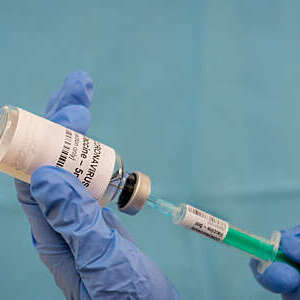There are developments in the area of new materials, specifically with plastic polymers, which have benefits when it comes to manufacturing as they enable the creation of syringes to more precise specifications. We are also seeing new technology where, for example, the polymer syringe has a micro-layer of glass on the inside. This provides syringes that meet dimensional specifications as well as a traditional glass-drug contact surface.
What is perhaps also relevant to the current COVID-19 vaccine campaign is the potential use of needle-free injectors. This is where the medication is injected by pressure and high velocity, or a mechanical motion to impart kinetic energy to the product, so that it penetrates the skin virtually painlessly. This is extremely interesting when it comes to vaccinating large populations quickly, as it has the potential to administer shots faster. It is also reassuring for needle-phobic people as there are no needles. This type of injector could also be very useful if the vaccine is, at any point, recommended for children.
Development is ongoing in terms of how needle-free injectors could be used with the COVID-19 vaccine and I believe they could be available in the next year or two. To that end, late last year, the committee consulted with a range of stakeholders, including WHO and CDC (Centers for Disease Control and Prevention), to check if our current standard for this technology, ISO 21649, Needle-free injectors for medical use – Requirements and test methods, was still relevant. We established that there are new understandings, market trends and technology developments that need to be taken into account, so we have embarked on a fast-tracked project to review and update the standard as quickly as possible. This means that any company wishing to support delivery of COVID-19 vaccines with needle-free technology will have the necessary guidance to make the appropriate injectors.
The COVID-19 pandemic has really reinforced the importance of international collaboration and the need to continue working closely with our partner organizations, such as WHO. COVID-19 is a truly global problem which knows no borders. Only by working together can we make a real difference.






